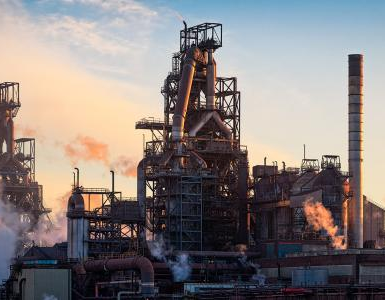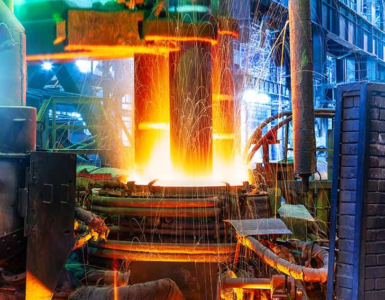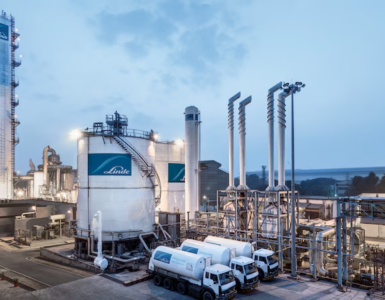European Commission approves €55 million German measure to support ArcelorMittal green steel demonstration plant using hydrogen.
The European Commission has approved, under EU State aid rules, a €55 million German measure to support ArcelorMittal Hamburg GmbH (‘ArcelorMittal’) in building a demonstration plant for the production of green steel using renewable hydrogen. The measure will contribute to the achievement of the EU Hydrogen Strategy and the European Green Deal targets, while helping to reduce dependence on Russian fossil fuels and fast forward the green transition in line with the REPowerEU Plan.
The German measure
Germany notified to the Commission its plan to support ArcelorMittal’s project to partially decarbonise its steel production in Hamburg.
🔥 What about we co-host a webinar? Let's educate, captivate, and convert the hydrogen economy!
Hydrogen Central is the global go-to online magazine for the hydrogen economy, we can help you host impactful webinars that become a global reference on your topic and are an evergreen source of leads. Click here to request more details
The aid, which will take the form of a direct grant of €55 million, will support the construction and installation of a demonstration production facility using 100% renewable hydrogen. The main objective of the project is to apply technology aimed at reducing greenhouse gas emissions in ArcelorMittal’s green steel production processes. The plant will have an annual capacity of 100,000 tonnes of direct reduced iron, a key input for steel production.
This new industrial scale demonstration plant will provide ArcelorMittal with valuable insights into the production of high-quality emissions-free steel. ArcelorMittal will use the experience gained at the demonstration plant to decarbonize its steel production in the EU on a larger scale. Moreover, ArcelorMittal has committed to share its technical know-how with other European steel producers.
The demonstration plant is envisioned to start operating in 2026. Once completed, the project is expected to avoid the release of over 700,000 tonnes of carbon dioxide in total.
The Commission’s assessment
The Commission assessed the measure under EU State aid rules, in particular Article 107(3)(c) of the Treaty on the Functioning of the European Union (‘TFEU’), which enables Member States to support the development of certain economic activities subject to certain conditions, and the Guidelines on State aid for climate, environmental protection and energy 2022 (‘CEEAG’).
The Commission found that:
- The project is amongst the early adopters of an innovative technology in its sector, namely technology using 100% renewable hydrogen in the production of direct reduced iron for steel.
- The measure facilitates the development of an economic activity, in particular the production of green steel. At the same time, it supports the objectives of key EU policy initiatives such as the European Green Deal, the EU Hydrogen Strategy and the REPowerEU Plan.
- The aid has an ‘incentive effect’, as the beneficiary would not carry out the investments in green steel production without the public support.
- The measure has a limited impact on competition and trade within the EU. In particular, it is necessary and appropriate to promote the production of green steel. In addition, it is proportionate, as the level of the aid corresponds to the effective financing needs. Furthermore, if the project turns out to be very successful, generating extra net revenues, the beneficiary will return part of the aid received to Germany (claw-back mechanism).
- The aid brings about positive effects that outweigh any potential distortion of competition and trade in the EU.
On this basis, the Commission approved the German measure under EU State aid rules.
Background
The 2022 Guidelines on State aid for climate, environmental protection and energy (‘CEEAG’) provide guidance on how the Commission will assess the compatibility of aid measures for environmental protection, including climate protection, and energy which are subject to the notification requirement under Article 107(3)(c) TFEU.
The new guidelines, applicable as from January 2022, create a flexible, fit-for-purpose enabling framework to help Member States provide the necessary support to reach the Green Deal objectives in a targeted and cost-effective manner.
The rules involve an alignment with the important EU’s objectives and targets set out in the European Green Deal and with other recent regulatory changes in the energy and environmental areas and cater for the increased importance of climate protection.
They include sections on aid for reduction of greenhouse gas emissions including through support for renewable energy, energy efficiency measures, aid for clean mobility, infrastructure, circular economy, pollution reduction, protection and restoration of biodiversity, as well as measures to ensure security of energy supply, subject to certain conditions.
The 2022 CEEAG aim to help Member States meet the EU’s ambitious energy and climate targets at the least possible cost for taxpayers and without undue distortions of competition in the Single Market.
With the European Green Deal Communication in 2019, the Commission reinforced its climate ambitions, setting an objective of net zero emissions of greenhouse gases in 2050.
The European Climate Law in force since July 2021, which enshrines the 2050 climate neutrality objective and introduces the intermediate target of reducing net greenhouse gas emissions by at least 55% by 2030, sets the ground for the ‘Fit for 55‘ legislative proposals presented by the Commission on 14 July 2021. Among these proposals, the Commission has presented amendments of the Renewable Energy Directive and the Energy Efficiency Directive with more ambitious binding annual targets to increase the production of energy from renewable sources and reduce energy use at EU level.
In July 2020, the Commission published its EU Hydrogen Strategy, setting ambitious goals for clean hydrogen production and use, and launched the European Clean Hydrogen Alliance, bringing together the European hydrogen community (industry, civil society, public authorities).
The non-confidential version of the decision will be made available under the case number SA.63733 in the State aid register on the Commission’s competition website once any confidentiality issues have been resolved. New publications of State aid decisions on the internet and in the Official Journal are listed in the Competition Weekly e-News.
Margrethe Vestager, Executive Vice-President in charge of competition policy, said:
This €55 million measure is an important step towards a more sustainable steel industry in Germany and the EU.
“By using renewable hydrogen, the green steel plant will contribute to reducing emissions in an energy-intensive sector and provide valuable insights for scaling up this technology across the EU. Today’s decision supports the EU’s transition to a net zero economy in line with the European Green Deal objectives.”
State aid: Commission approves €55 million German measure to support ArcelorMittal’s green steel demonstration plant, February 17, 2023








